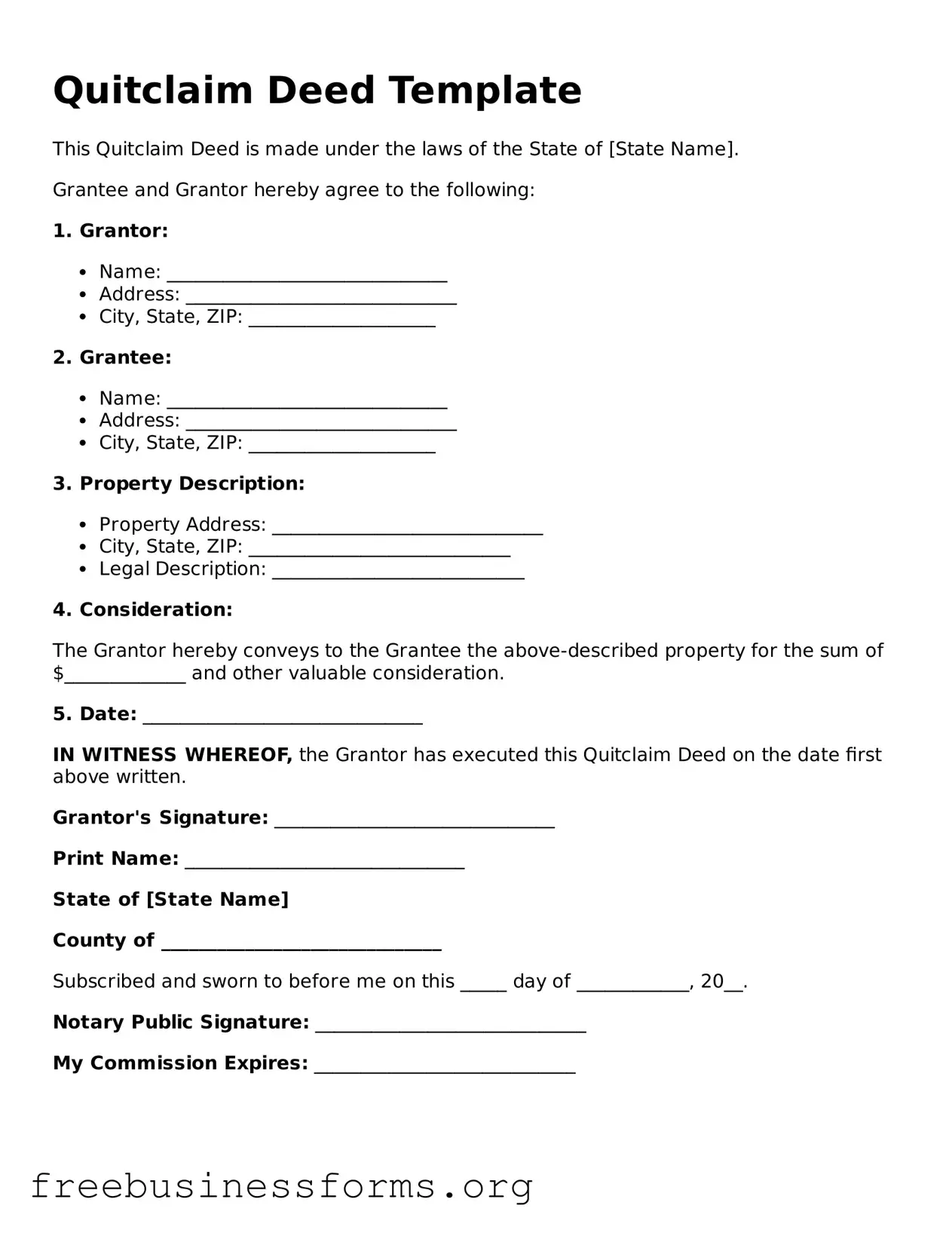Quitclaim Deed Template
This Quitclaim Deed is made under the laws of the State of [State Name].
Grantee and Grantor hereby agree to the following:
1. Grantor:
- Name: ______________________________
- Address: _____________________________
- City, State, ZIP: ____________________
2. Grantee:
- Name: ______________________________
- Address: _____________________________
- City, State, ZIP: ____________________
3. Property Description:
- Property Address: _____________________________
- City, State, ZIP: ____________________________
- Legal Description: ___________________________
4. Consideration:
The Grantor hereby conveys to the Grantee the above-described property for the sum of $_____________ and other valuable consideration.
5. Date: ______________________________
IN WITNESS WHEREOF, the Grantor has executed this Quitclaim Deed on the date first above written.
Grantor's Signature: ______________________________
Print Name: ______________________________
State of [State Name]
County of ______________________________
Subscribed and sworn to before me on this _____ day of ____________, 20__.
Notary Public Signature: _____________________________
My Commission Expires: ____________________________
